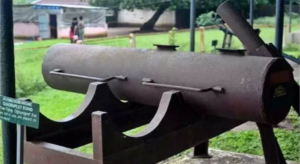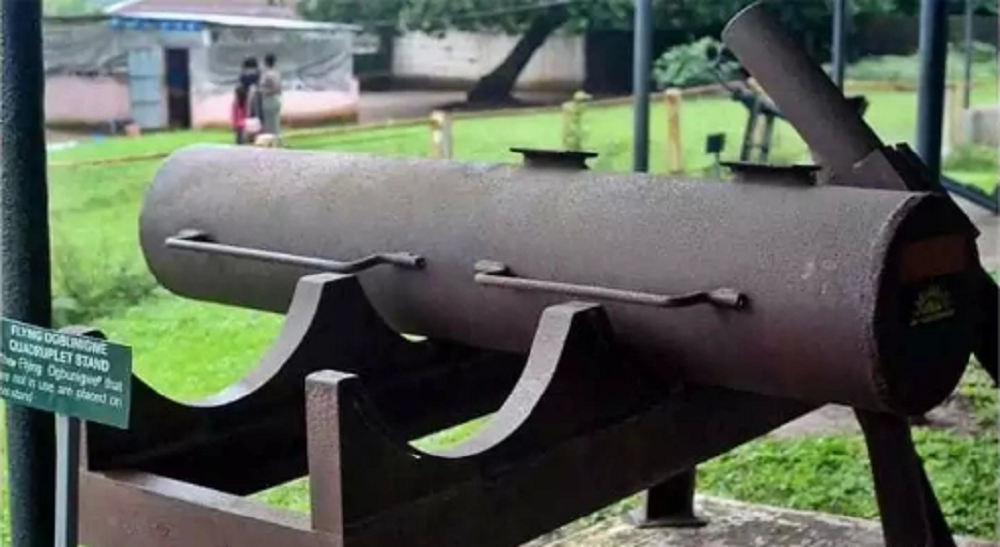Those behind the making of Ogbunigwe during Biafra war

How was the weapon mass destruction popularly called Ogbunigwe made during the Nigeria-Biafra war? Here’s a perspective that would help unravel the mystery, names and science behind the home-made bomb which as the name signifies killed in large number.
During the civil war, the Biafran military assembled a cast of core engineers, scientists, agriculturists, strategists, technologists etc to produce food, weapons, defence systems and equipment for civil and military uses. They also had the mandate to produce other useful items that would help the people to survive and to give the military a better chance to win the war. This group assembled under the RESEARCH AND PRODUCTION (RAP) unit of the military. There were many branches of this important unit including those who refined petroleum
The war lasted three years. It probably would have been shorter if RAP had not existed and the resilient spirit of Biafrans was low.
When the war ended, the East Central State Government under Ajie Ukpabi Asika tried to bring back all these engineers and scientists under a research institute called Projects Development Agency (PRODA) later to be renamed Projects Development Institute.
The story of these geniuses, exceedingly inventive men and women who showed they were among the best in Africa has been written in several articles and books in the last 50 years. Some of the stories have been bewildering in their claims, while some have been quite concise.
My earlier countering of Franklin’s claims were based on information that my father gave me and some of what I witnessed during the war. My father was in RAP and I had the singular privilege and honour of meeting some of the people who were in RAP at the time, including the gentleman, Dr. Ebenezer Ekechukwu, whose nephew presented some wrong claims about his uncle’s roles in RAP. I am also able to correct even my own earlier positions because I have in the last few days spoken to surviving members of RAP and PRODA who were there when both organisations were started.
I am compelled to place the facts as they are because it would be thoroughly unfair to the memory of those who have died and the sacrifices of those living today, who gave their best for many of us to survive today. And of course to debunk other fallacies making the rounds of the internet.
After the war, many of these scientists in RAP ended up in the University of Nigeria, Nsukka, where I lived and again met them because my Dad was there too.
Now some of the key people who were in RAP and I will tell you what I have found out about what they did.
Ben Chukwuka Nwosu, nuclear physicist, – he was the overall head of RAP, not Dr. Ekechukwu
Willy Achukwu, scientist – he was in charge of RAP in Umudike
Sylvester Akalonu, engineer, – he was part of the team that developed the Ogbunigwe
Charlie Okafor, chemist – he was one of those who helped to name it RAP and the team that compounded solid smokeless rocket. The initial rockets fired had trails of smoke.
Ngozi Okafo, chemist
Agu Ogan, biochemist – helped to design some of the weapons and some antidotes for any eventual chemical attack on Biafra
Gordian Ezekwe, engineer – he was the head of the team that produced the explosive weapons and rockets, especially Ogbunigwe. The weapons development revolved around this soft spoken gentleman.
Clifford Ezeilo – engineer, specialist in thermodynamic, he worked on the rockets
Mark Chijioke, engineer – together with Ezekwe made solid fuel for the rockets.
C.O. Chiori, pharmaceutical scientist
Edmond Kaine, engineer – rocket and weapons design
Oleka Udeala, pharmaceutical scientists, helped in creating pharmaceuticals and other drugs as well as antidotes
Ebenezer Ekechukwu – engineer, he was the prime mover for the creation of the salt lake in Uzuakoli. He helped to source the brine and salt cakes for that project.
Eddie Mbadiwe, biochemist
Martin Nwaji, chemist, designed the incendiary weapon that burned through tanks. FEMIT
Sam Agogbua, biochemist, synthesised writing ink from herbs with FU Ekezie
Emmanuel Anosike, biochemist
Chimere Ikoku, chemist – was the head of the Uzuakoli group of RAP
Fabian Ekezie, technologist – rearmed spent bullets, synthesized vehicle fuel from alcohol and created laboratory glassware for the scientists and engineers. Also built silencers for guns with Agogbua
F.N.C. Oragwu – nuclear physicist, headed a unit in RAP and was at the core of producing war machines for the military
Willy Achukwu – technical scientist whose input helped in building Ogbunigwe
Fred Ozoh – chemical technologist, ensured the laboratories worked at prime.
Now there are many others that I cannot remember fully because there were quite a number of great men and women who made RAP what it was. RAP was big. It had many branches. I am more concerned here with the Uzuakoli unit.
It is evident here that Ekechukwu, though a key member of RAP was not its head and reported to some people. I knew the man personally. He used to visit my father when we lived in Methodist College Uzuakoli where RAP had one of its operating units.
Credit: Ken Ekezie, to put to proper perspective an earlier piece credited to Franklin Ekechukwu on Twitter.







